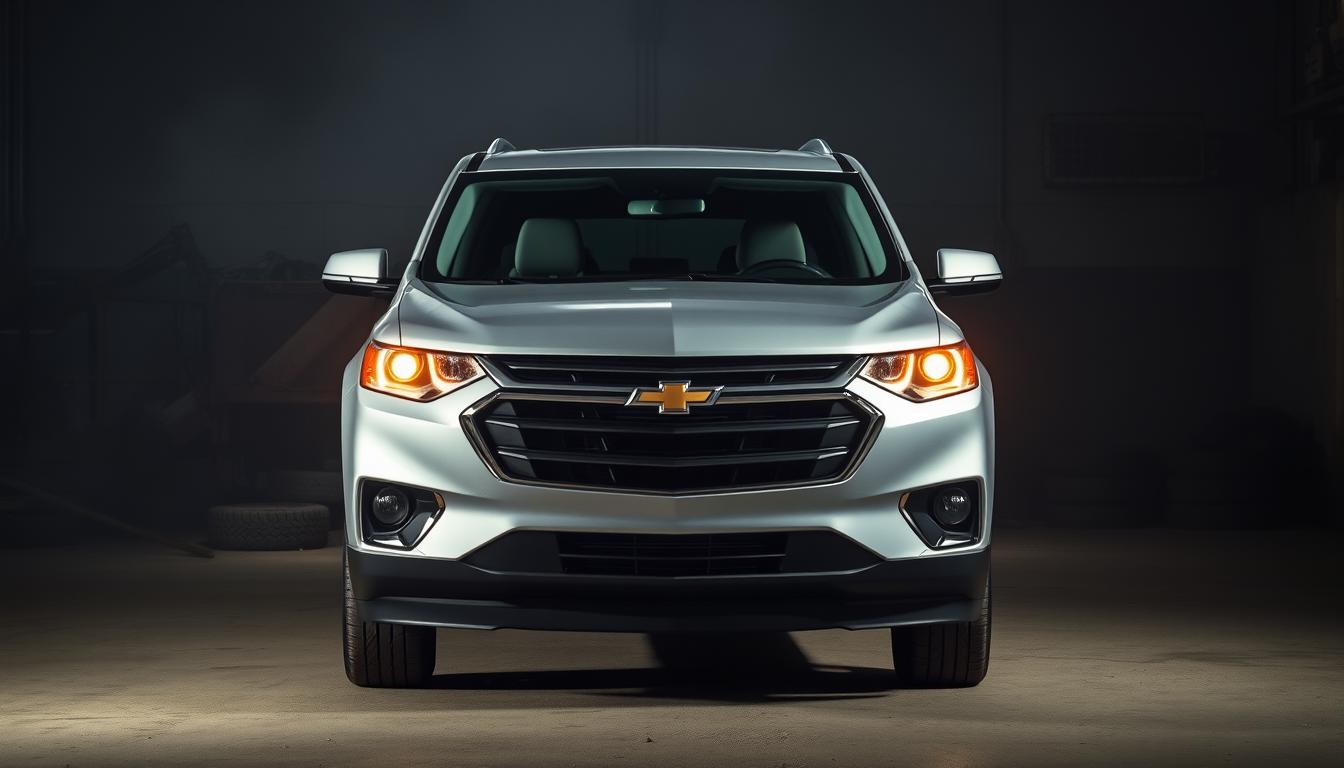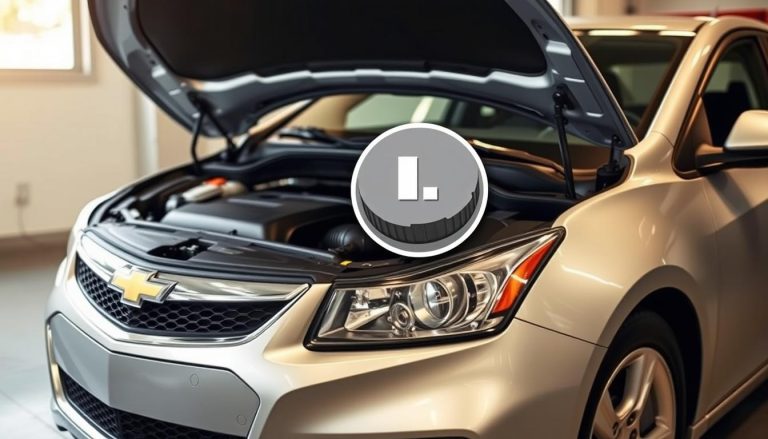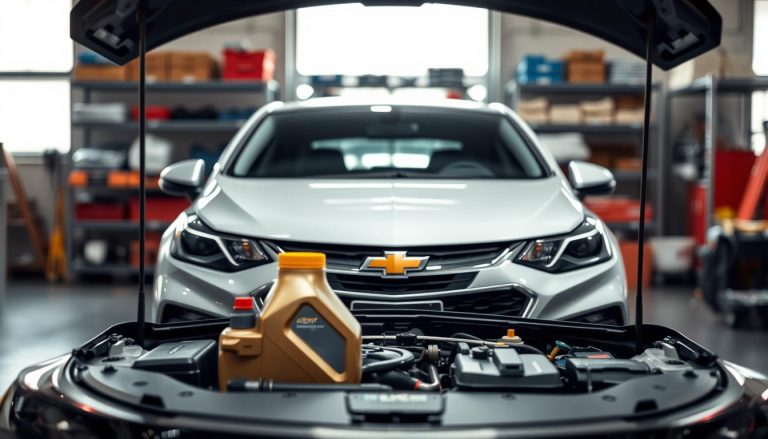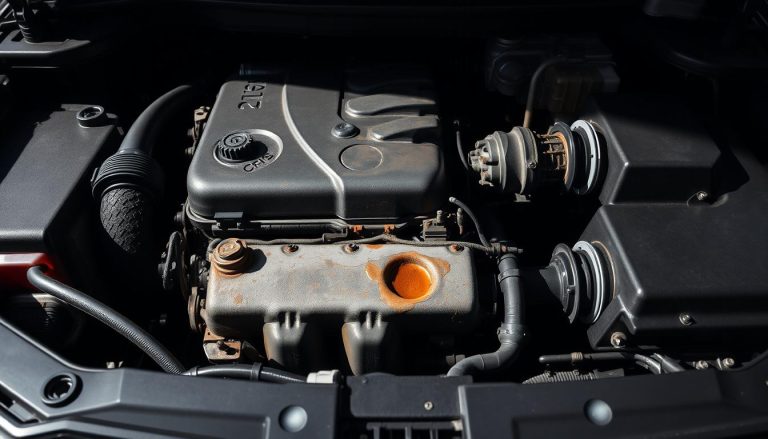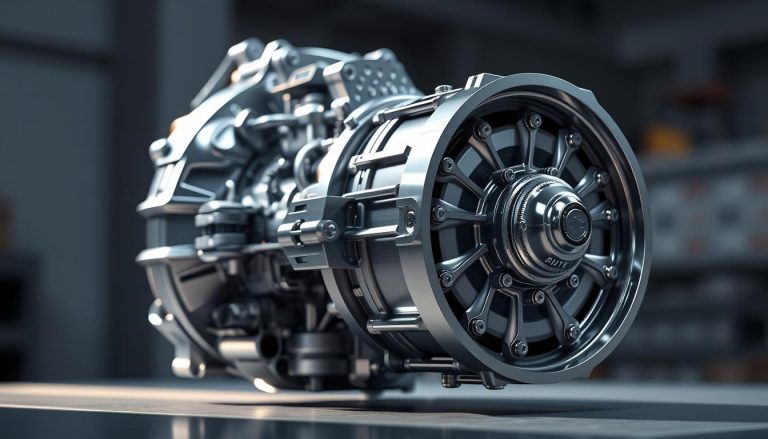Steer Clear: Chevy Traverse Years You Should Avoid
Buying a used Chevy Traverse can feel like navigating a minefield of problems. Not all model years are the same. Some Chevy Traverse years to avoid could save you thousands in repair costs. It’s smart to research vehicle history before investing.
The Chevrolet Traverse, a mid-size crossover SUV, has faced reliability issues in some years. Some models have had engine, transmission, and electrical system problems. These issues can cost a lot and be frustrating. To find the Chevy Traverse worst years, you need to look at consumer reports and mechanical records.
When buying, do your homework. Some years have big reliability problems. These include issues with the timing chain, engine misfires, and transmission failures. Knowing which years to avoid can save you from expensive repairs and safety risks.
This guide will give you key info on Chevy Traverse model years. You’ll learn about mechanical issues and what other owners say. This knowledge is vital for making a smart car-buying choice, whether you’re new to SUVs or a seasoned car enthusiast.
By the end of this article, you’ll know which Chevy Traverse years to steer clear of. Your aim is to find a reliable, safe, and affordable vehicle. You want one that meets your family’s needs without unexpected mechanical problems.
The Chevy Traverse’s Evolution and History
The Chevrolet Traverse is a big deal in the midsize SUV world. It brought new design and features from the start. Looking at the Chevy Traverse’s history shows how it has gotten better over time.
The Traverse’s story started with its first generation. It changed Chevrolet’s SUV lineup a lot. Knowing about the Traverse’s history helps buyers understand any problems it might have had over the years.
First Generation Overview (2009-2017)
The first Chevy Traverse was a strong family SUV. It had some key features:
- It replaced several SUV models
- It had room for three rows of seats
- Most trims used a 3.6L V6 engine
- It was better at using fuel than older models
Second Generation Features (2018-Present)
The second generation made big strides in reliability. It fixed some of the first generation’s problems:
- It got a new, modern look
- It had better safety features
- It offered more powerful engines
- Its tech systems were updated
Major Design Changes Through Years
Chevrolet made smart changes to improve the Traverse. They listened to what people wanted:
| Year Range | Key Design Changes |
|---|---|
| 2009-2012 | It started with a new platform |
| 2013-2017 | It got some small interior updates |
| 2018-2021 | It got a big exterior makeover |
| 2022-Present | It added new driver help features |
The Chevy Traverse’s growth shows Chevrolet’s dedication to making it better. They keep working to fix problems and make it more reliable.
Most Problematic Chevy Traverse Years to Avoid
When looking at Chevy Traverse years to steer clear of, some stand out for their reliability issues. Owners and buyers should watch out for certain Chevy Traverse model years. These years have shown consistent mechanical problems.
Research and consumer reports show the most problematic Chevy Traverse model years are:
- 2009-2010: Early models with big transmission and engine troubles
- 2012-2013: Had major electrical system failures
- 2015: Had ongoing engine performance issues
The 2009-2010 models are the most critical to avoid. These early models faced many serious problems, including:
- Often had transmission failures
- Used a lot of oil
- Expensive repairs for the powertrain
- Parts wore out too soon
Experts say to check the vehicle’s history before buying. Ask for detailed maintenance records and get a professional inspection. This is key for the 2009-2010 models.
Knowing about these bad years can save you a lot of money. It also helps avoid long-term reliability issues with your car.
Common Engine Issues in Troubled Model Years
Chevy Traverse owners have faced big engine problems in many years. Knowing these issues helps buyers make smart choices and keep their cars in good shape.
Engine troubles often hit specific Chevy Traverse models. This makes it key for owners to keep up with maintenance.
Timing Chain Problems
Timing chain failures are a big worry for some Chevy Traverse models. They can cause serious engine damage, leading to costly fixes or even a new engine.
- Symptoms include unusual engine rattling
- Potential loss of engine power
- Increased risk of complete engine failure
Engine Misfiring Concerns
Engine misfiring is a big problem for Chevy Traverse owners. It usually comes from bad ignition systems or fuel issues.
- Rough idle characteristics
- Reduced fuel efficiency
- Potential check engine light activation
Oil Consumption Issues
High oil consumption is another big issue in some Chevy Traverse years. Owners might see their oil levels drop fast, needing constant refills and risking engine damage.
- Frequent oil level monitoring recommended
- Potential seal or piston ring degradation
- Risk of premature engine wear
Transmission Problems Across Different Years
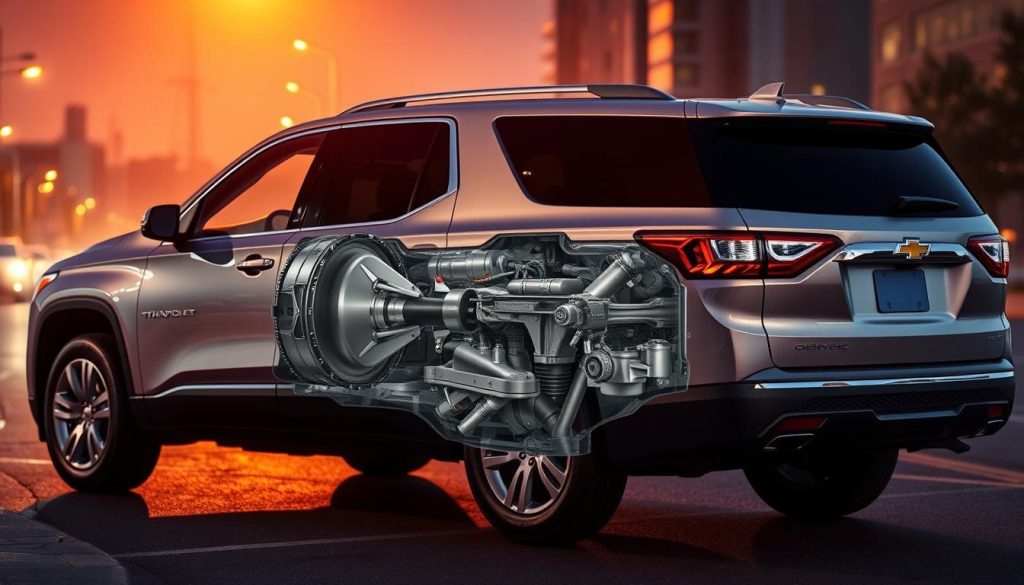
The Chevy Traverse has faced many transmission issues over the years. These problems can affect how well the car runs and how reliable it is. It’s important for both new buyers and current owners to know about these issues.
Some Chevy Traverse years have had more problems than others. Here are a few:
- 2009-2012 models with high-risk transmission failures
- 2013-2015 models experiencing shifting irregularities
- 2016 models with documented transmission control module malfunctions
These problems can show up in different ways. Look out for:
- Unexpected gear slipping
- Delayed engagement when shifting
- Unusual grinding or vibration during gear transitions
- Transmission warning light activations
Fixing these issues can cost between $1,500 and $4,000. If you notice any of these problems, get your car checked by a certified Chevrolet technician right away.
Some years are worse than others for the Chevy Traverse’s transmission. These years often see early wear, mechanical stress, and problems with the electronic control system. If you’re looking to buy, do your research and think about getting an extended warranty.
Critical Safety and Reliability Concerns
The Chevy Traverse has faced many safety issues over the years. This is a big worry for anyone looking to buy one. It’s important to know about these problems to make a smart choice.
The National Highway Traffic Safety Administration (NHTSA) has listed many recalls for the Chevy Traverse. These issues cover important areas that buyers need to think about.
Safety Recall History
There have been many recalls for the Chevy Traverse because of reliability problems. Some of the main issues include:
- Brake system malfunctions
- Potential fuel system defects
- Electrical system complications
- Structural integrity concerns
Consumer Safety Reports
Many drivers have shared their safety concerns about the Traverse. They’ve talked about serious problems that affect the car’s safety and how it works.
- Unexpected brake failures
- Transmission unpredictability
- Intermittent electronic system disruptions
NHTSA Ratings and Reviews
The NHTSA gives detailed safety ratings for cars. The Chevy Traverse’s ratings have changed a lot over the years. This shows why it’s key to pick a model with good safety ratings.
When looking to buy, it’s best to check the safety record of each model year. Choose ones with fewer recalls and better safety ratings.
Best Performing Chevy Traverse Model Years
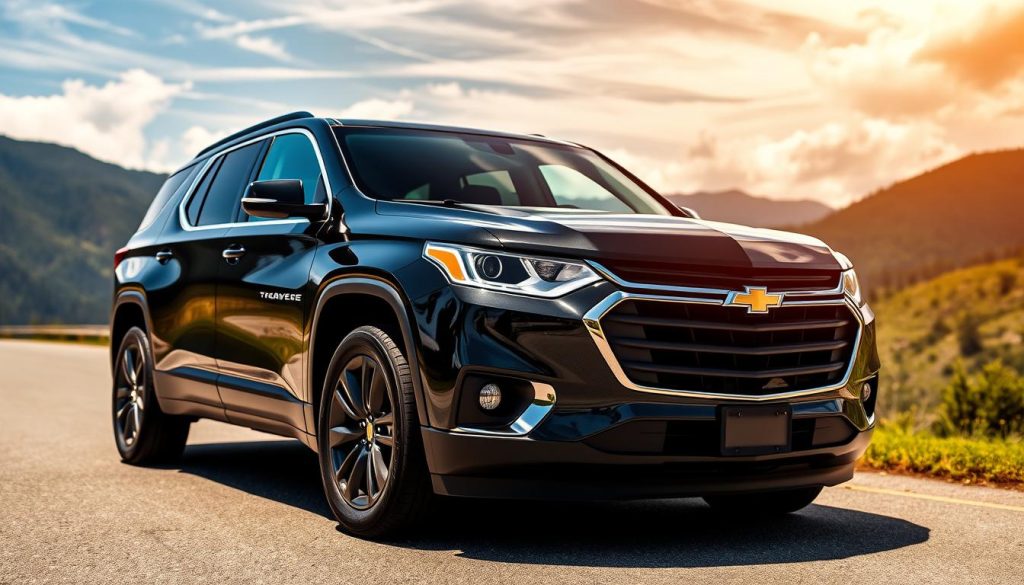
Looking at the best Chevy Traverse years, we find some top models. These models are known for their performance, safety, and durability. They are perfect for those who want a reliable car.
The top Chevy Traverse model years are:
- 2020 Traverse: Exceptional reliability ratings
- 2019 Traverse: Improved safety features
- 2021 Traverse: Enhanced technological capabilities
Models from 2019-2021 are best to avoid common problems. These years show big improvements in quality and tech. The 2020 model is known for its strong performance and fewer mechanical issues.
| Model Year | Key Strengths | Consumer Satisfaction |
|---|---|---|
| 2020 | Reliable Engine | 4.5/5 Stars |
| 2019 | Improved Safety | 4.3/5 Stars |
| 2021 | Advanced Technology | 4.6/5 Stars |
Choosing a Chevy Traverse requires some research to skip the bad years. The models mentioned are the most reliable for families needing a good SUV.
Known Electrical System Failures and Issues
Electrical problems can affect Chevy Traverse owners, causing big issues in different years. Knowing these problems helps buyers decide if a car is reliable and what maintenance might cost.
The Chevy Traverse’s electrical system has faced many challenges. These issues can affect how well the car runs and its safety. It’s important for drivers to know about these problems in different years.
Battery and Alternator Problems
Many electrical failures start with battery and alternator problems. Some Chevy Traverse years have had ongoing issues with:
- Premature battery drainage
- Inconsistent charging performance
- Unexpected electrical system shutdowns
Electronic Control Module Malfunctions
The Electronic Control Module (ECM) is key for managing the car’s electrical systems. Chevy Traverse problems have shown big ECM issues:
- Intermittent sensor failures
- Erratic warning light activations
- Complex diagnostic requirements
Wiring Harness Defects
Wiring harness problems can cause big electrical issues. These defects can affect many car functions and need a pro to fix.
| Model Year | Electrical Issue Frequency | Estimated Repair Cost |
|---|---|---|
| 2009-2012 | High | $500-$1,500 |
| 2013-2016 | Moderate | $300-$1,000 |
| 2017-2020 | Low | $200-$800 |
Regular maintenance and early checks can help avoid electrical problems in Chevy Traverse models.
Interior Quality and Common Complaints

The Chevy Traverse has faced big problems with its interior quality over the years. Many owners have shared their concerns about reliability issues. These issues affect how well the car drives and how happy the owners are.
Some common complaints about the Chevy Traverse’s interior include:
- Premature wear on seat fabrics and leather surfaces
- Dashboard material degradation
- Inconsistent panel fit and finish
- Excessive interior noise levels
There are several key areas where the Chevy Traverse has reliability issues. Material durability is a big problem. Some owners see their interior parts start to fall apart quickly, even in the first few years.
The most common problems are found in:
- Center console design weaknesses
- Infotainment system interface problems
- Climate control system inconsistencies
- Trim piece alignment defects
When looking at used Chevy Traverse models, it’s important to check the interior for wear. Look for signs of reliability issues. Researching the model year can also help spot long-term quality problems before you buy.
Cost Analysis: Repairs and Maintenance by Year
Buying a Chevy Traverse means thinking about money, like which years to avoid. Knowing the costs helps buyers choose wisely.
Average Repair Costs
Some Chevy Traverse years cost more to fix. It’s key to look at these costs.
- 2011-2012 models with significant engine issues
- 2016-2017 models experiencing transmission problems
- Early first-generation vehicles with higher maintenance requirements
Maintenance Schedule Impact
Maintenance schedules affect Chevy Traverse costs. Each year needs different care.
| Model Year | Average Annual Maintenance Cost | Common Repair Areas |
|---|---|---|
| 2009-2012 | $750-$1,200 | Engine, Transmission |
| 2013-2016 | $600-$900 | Electrical Systems |
| 2017-2019 | $500-$750 | Minor Repairs |
Long-term Ownership Expenses
Think about the total cost of ownership when buying a Chevy Traverse. Things like reliability and repair costs matter a lot.
- Recommended budget for unexpected repairs: $1,000-$1,500 annually
- Extended warranty consideration for high-risk model years
- Regular maintenance can reduce overall repair expenses
Consumer Reports and Owner Feedback

Consumer reports give us a close look at how the Chevy Traverse really performs. Owners have shared a lot about their time with the car. They talk about the chevy traverse lemons that have caused a lot of trouble.
Some common complaints for the worst years of the Chevy Traverse include:
- Persistent engine reliability issues
- Transmission failures
- Unexpected repair costs
- Electronic system malfunctions
Looking at what owners say, some years are much worse than others. They often talk about high maintenance costs and frequent mechanical issues with certain models.
Reliability ratings from trusted sources show big differences between model years. The most common problems are:
- Unexpected transmission breakdowns
- Engine performance inconsistencies
- Electrical system complications
Even though some owners have good things to say, the overall data warns buyers. It’s important to check the reliability of a model year before buying. This way, you can avoid the problems with less reliable Chevy Traverse models.
Alternatives to Problematic Traverse Years
When looking for a used Chevy Traverse, smart buyers check out reliable alternatives. These options offer similar value and performance. The mid-size SUV market has many good choices for those avoiding bad Traverse years.
- Honda Pilot: Known for exceptional reliability and consistent performance
- Toyota Highlander: Offers superior long-term durability and resale value
- Mazda CX-9: Provides excellent handling and modern safety features
- Hyundai Palisade: Delivers competitive pricing and a full warranty
Better Model Year Choices for Chevy Traverse
While some Chevy Traverse years are best avoided, others are more reliable. Look for recent models with better engineering and fewer problems.
| Model Year | Reliability Rating | Recommended Purchase |
|---|---|---|
| 2019 | 4.2/5 | Highly Recommended |
| 2020 | 4.5/5 | Excellent Choice |
| 2021 | 4.7/5 | Top Recommendation |
When looking at alternatives to bad Chevy Traverse years, do thorough research. Check maintenance records, consumer reports, and professional reviews. This helps make a smart choice.
Key takeaway: Explore multiple options and don’t limit yourself to a single model or brand when seeking a reliable mid-size SUV.
Conclusion
Choosing the right Chevy Traverse needs careful research and knowing its history. When looking at chevy traverse years to avoid, buyers must watch out for certain models. The 2009-2012 and 2015-2016 models have big mechanical and safety issues.
Smart buyers should look at the second-generation Traverse models, made after 2018. These models show big improvements in engineering and reliability. By checking repair histories, consumer reports, and recalls, buyers can make smart choices. This helps protect their investment and saves on future repair costs.
Buying a used Chevy Traverse requires a smart plan. Buyers need to weigh their budget against detailed checks and inspections. Knowing which years to avoid is key to finding a reliable, affordable SUV.
While buying a car always comes with some risk, this guide helps buyers make better choices. Knowing the good and bad years helps drivers find a car that fits their needs and budget.

